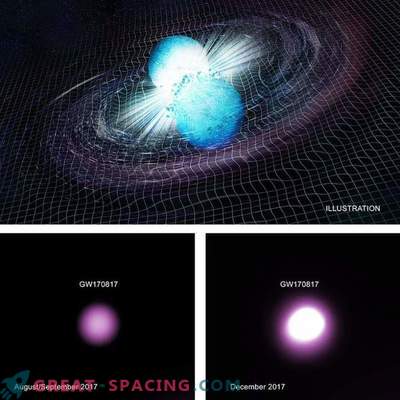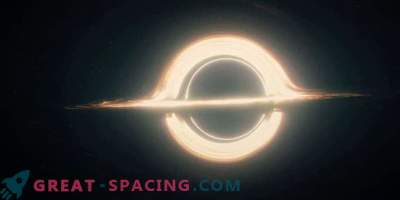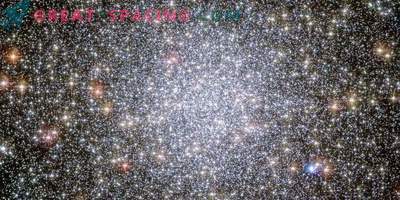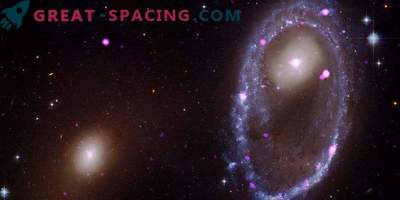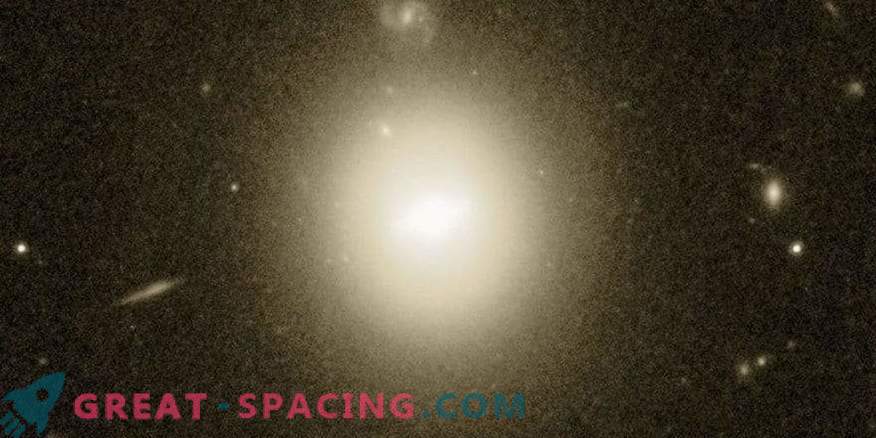
Data from the Hubble Space Telescope (yellow-white) and the Chandra X-ray Observatory (purple). The purple-white source at the bottom left displays X-rays from the remnants of a star torn apart when an average mass falls into a black hole.
The researchers were able to prove the existence of small black holes and supermassive. But there are still heated debates about the presence of a black hole of average mass. A new study from the Center for Space Studies at the University of New Hampshire provides compelling evidence that this type of black hole exists and devours an approaching star.
The data obtained allow us to determine the mass of a black hole and understand the nature of the event itself. For the analysis, satellite imaging was used to record for the first time a control sign of activity. They revealed a giant multi-wave flare on the edge of a distant galaxy. The flash brightness faded with time in the process of destruction and absorption of a star by a black hole. The star collapsed in October 2003, and it took a dozen more years to destroy its radiation.
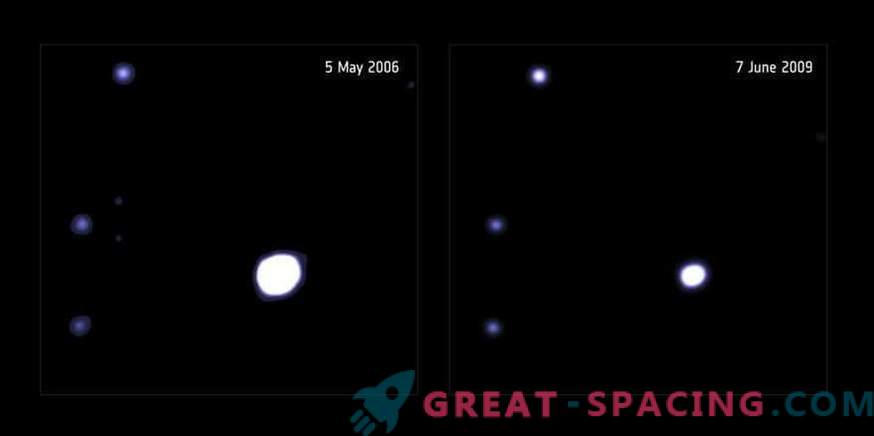
The researchers used data from three X-ray telescopes: Chandra, Swift, and XMM-Newton. The flash length characteristic indicates that the star is breaking, creating a tidal disruption event. Tidal forces due to the powerful gravity of a black hole can destroy an approximate object. At this time, some of the stellar debris is thrown out at high speeds, while the rest fall to a black hole. When absorbed, the material is heated to millions of degrees and generates an X-ray flash.
The theory of the formation of galaxies indicates the presence of many black holes of average mass in star clusters. But most of them are quiet, so they cannot be noticed.







